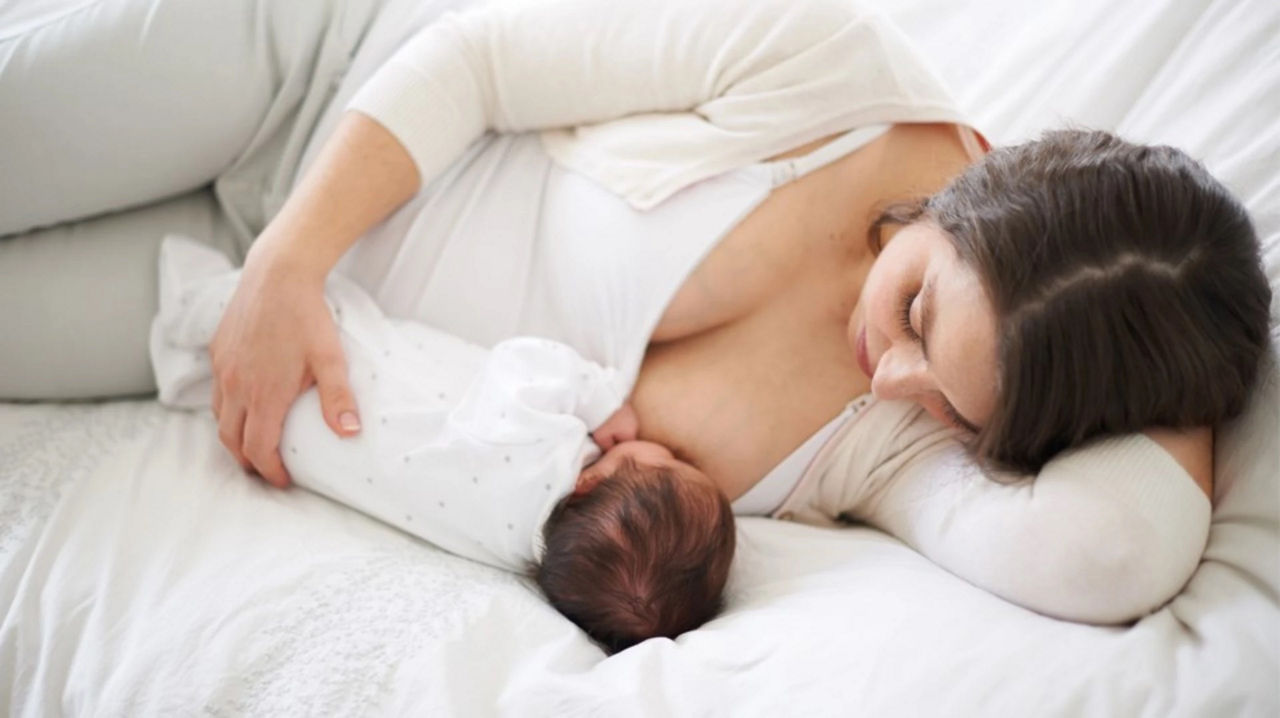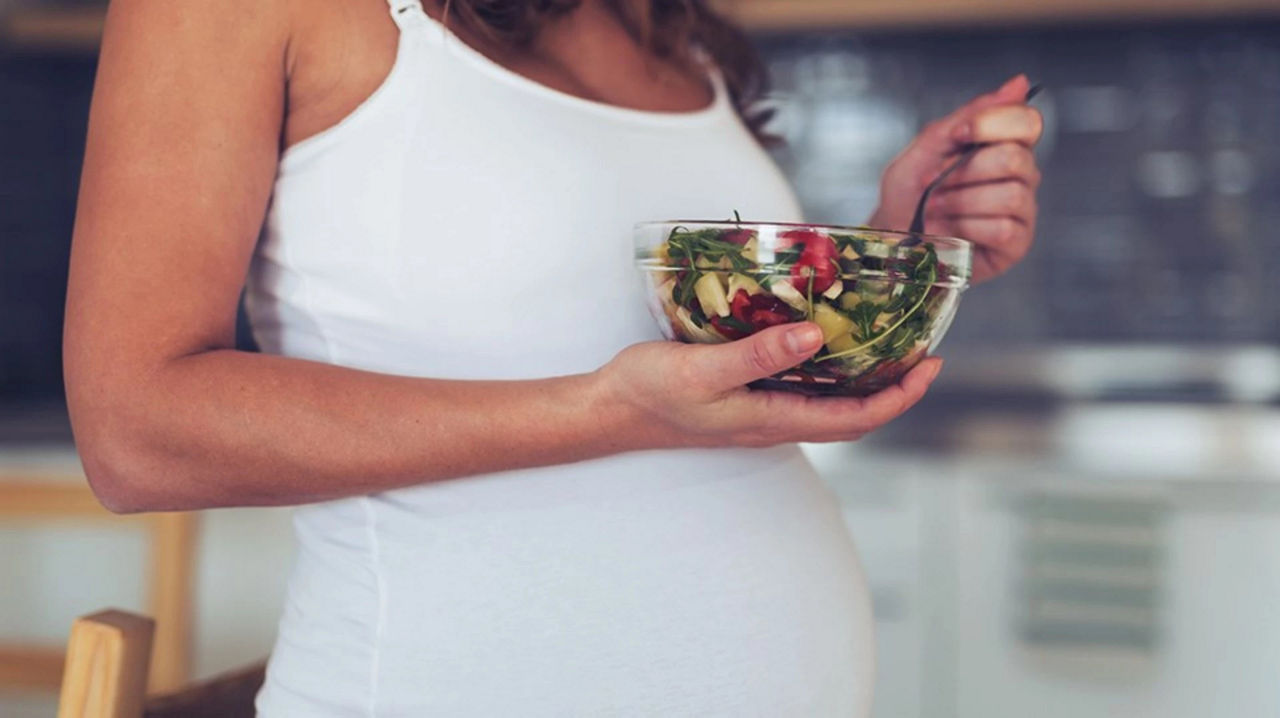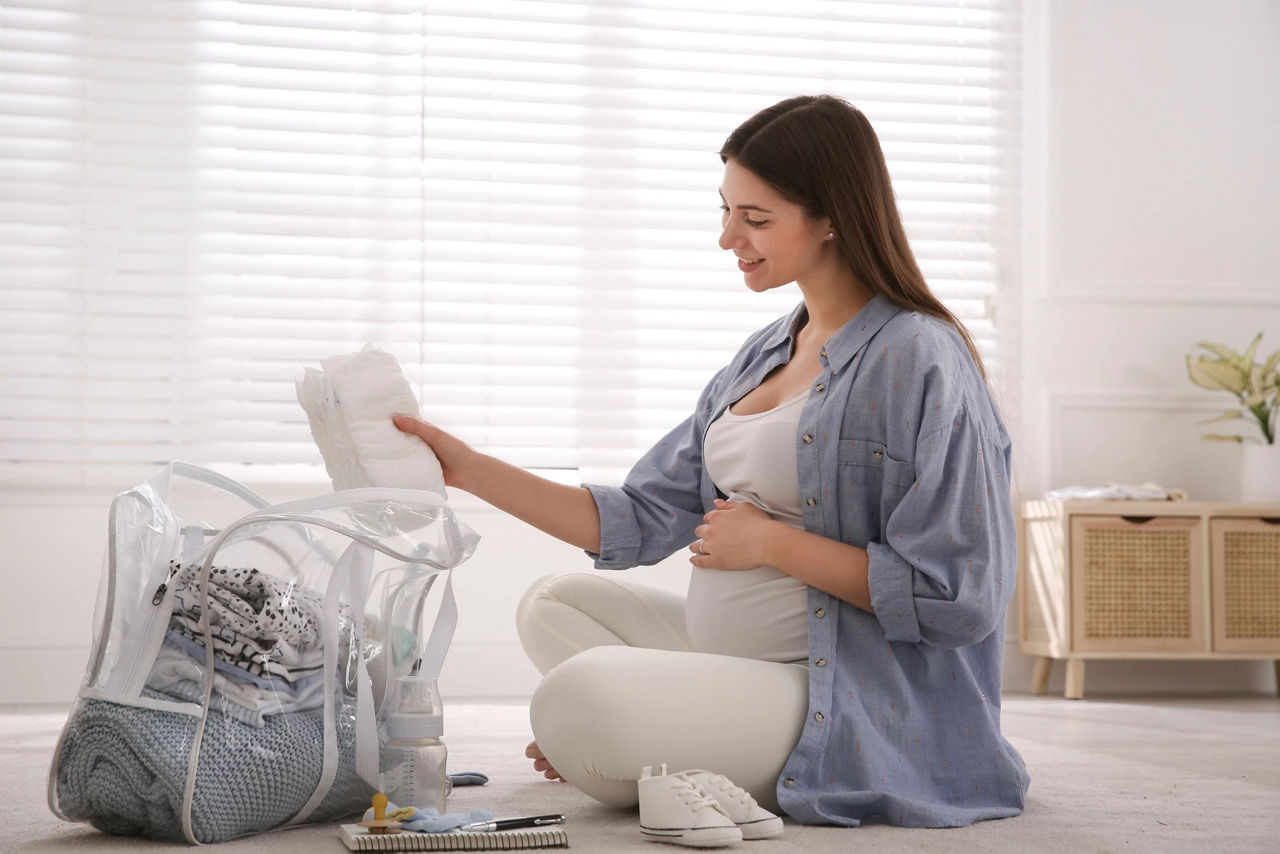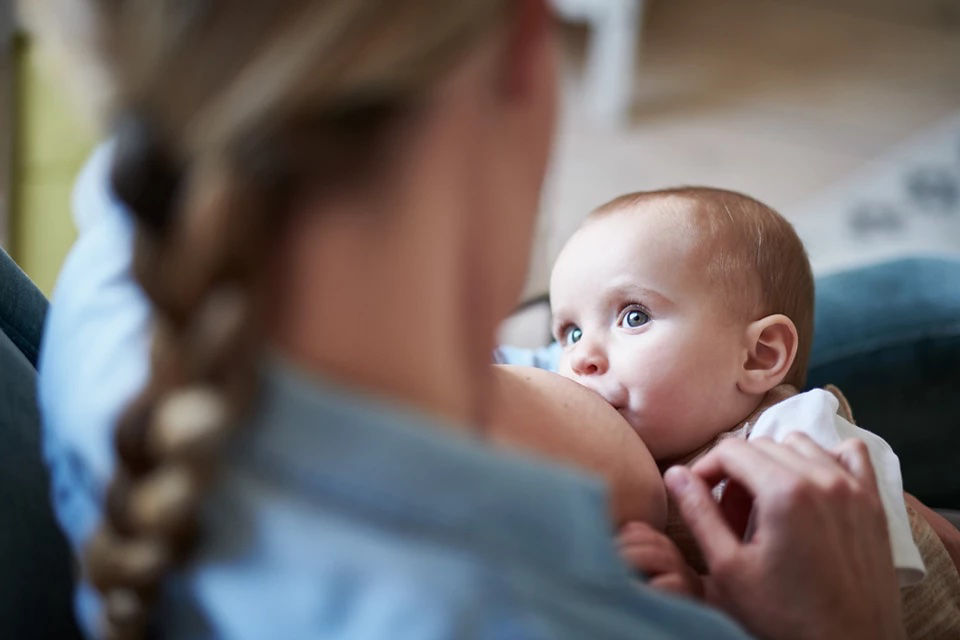38 weeks pregnant
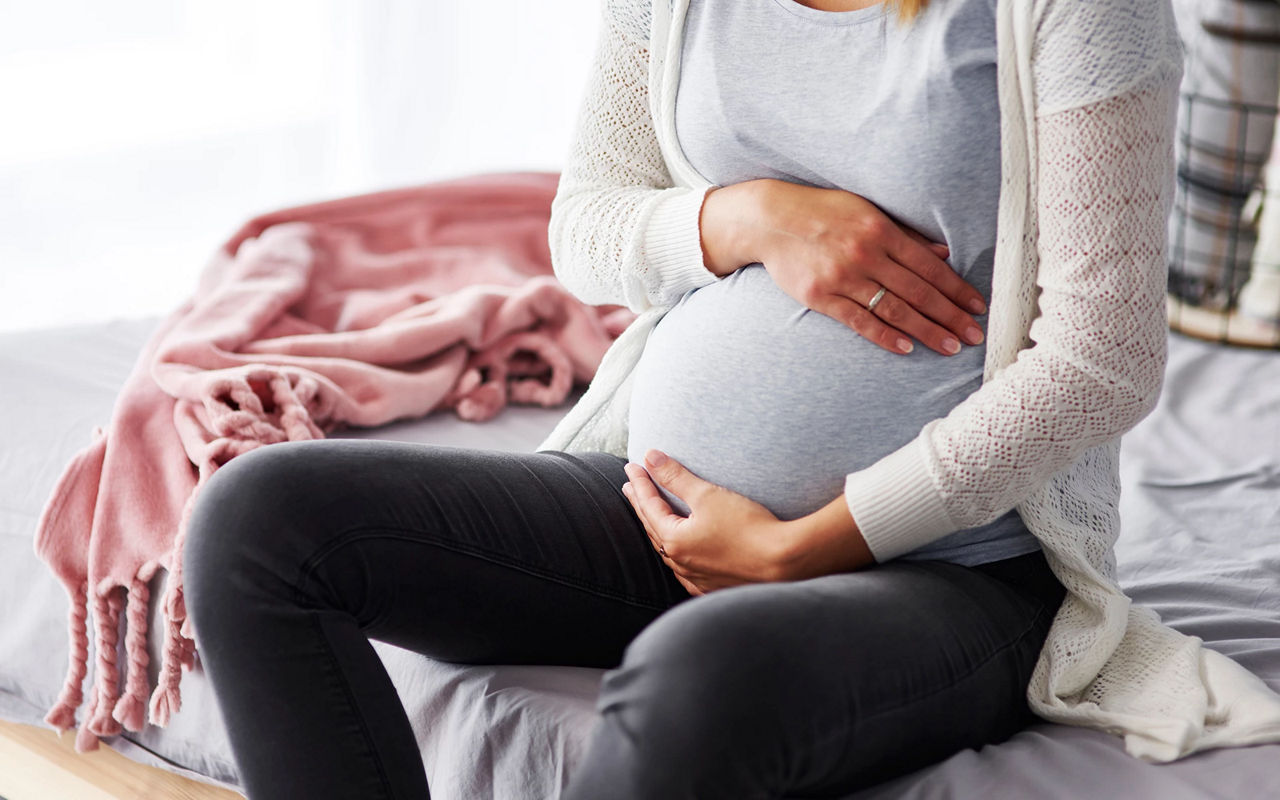
Explore pregnancy stages week by week
38 weeks pregnant is how many months?
Month 9 (Trimester 3)
At 38 weeks pregnant, you’re considered ‘full-term’, and are very close to your due date1. In most cases, labour will start anywhere between 38 - 42 weeks of pregnancy, and you’re probably noticing every little twinge and feeling as you wait for your baby to arrive.
It’s likely that you’ll have an antenatal appointment around about now, during which your midwife will check the size of your bump and your blood pressure. They’ll also check for protein in your urine to ensure that you’re not at risk of a condition known as pre-eclampsia.
As you approach your due date and are getting closer to meeting your baby for the very first time, here we’re exploring the 38 weeks pregnant symptoms not to ignore, signs of labour at 38 weeks pregnant, and how to make sure your hospital bag is packed and prepared for your new arrival.
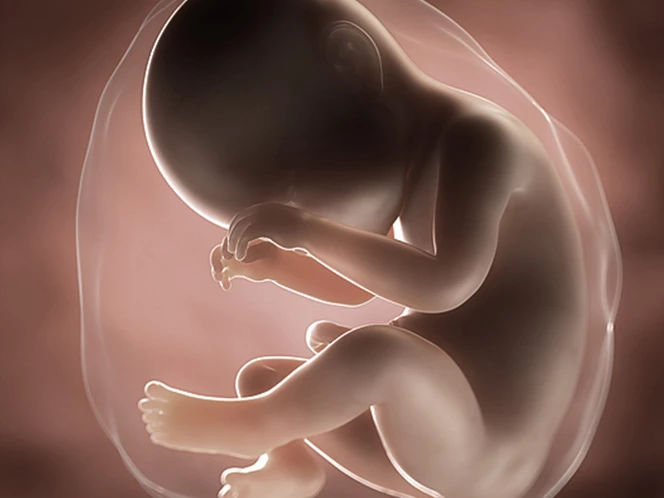
Your baby’s development at 38 weeks pregnant
Whilst your baby is now considered full-term, they’ve still got plenty of room inside your uterus, and as such you should still be able to feel them moving around right up until you go into labour2. If you notice anything unusual about your baby’s movements at all, always seek advice from your midwife or healthcare professional to ensure that everything is as it should be.
At 38 weeks pregnant, your baby’s bowels contain a substance called meconium. Meconium is a green, sticky slime that’s made up of all the things that they’ve swallowed in the womb (this includes hair and amniotic fluid)1.
Meconium usually forms your baby’s first poo after they’ve been born (look at our handy baby poo chart for more information). Sometimes this can happen during your labour, resulting in the amniotic fluid containing meconium. If this is the case, your healthcare professional will be monitoring things closely, as it could signal that your baby is stressed3.
How big is my baby at 38 weeks pregnant, and what do they look like?
At 38 weeks pregnant, your baby is around 49.8 cm long from their head to their heels. To put that into context, that’s about the size of a stick of rhubarb1, and they now weigh anywhere between 3-4 kg4.
Throughout your second trimester, your baby has been covered in lanugo - a soft, fine downy hair. Whilst some babies are born with some small patches of lanugo, at 28 weeks pregnant this has mostly disappeared1.
Pregnancy at 38 weeks: what’s happening in my body?
If this is your first baby, at 38 weeks pregnant your baby will most likely have moved down headfirst into your pelvis in readiness for birth. This is sometimes referred to as your baby being engaged. As a result, you may start to feel some additional pressure in your abdomen4.
At 38 weeks pregnant you may also be experiencing what are known as Braxton Hicks contractions. Sometimes referred to as practice contractions, Braxton Hicks are usually painless, irregular and don’t last for very long5. If you notice that these contractions become more frequent and more painful, it could be a sign that you’re in labour so always seek advice from your midwife or healthcare provider for advice around the next steps.
38 weeks pregnant: signs and symptoms
At this point, you might still be experiencing many of the pregnancy symptoms that you’ve become familiar with throughout each of your trimesters. For example1:
- Heartburn.
- Mood swings.
- Leg cramps.
- Backache.
- Swollen hands and feet. Always seek advice from your healthcare provider if this happens suddenly, as this could be a sign of pre-eclampsia6.
38 weeks pregnant: symptoms not to ignore
Although the majority of pregnancy symptoms are perfectly normal and nothing to be concerned about, there are some that may require you to seek medical advice, and we’ve outlined some of these below.
During your first trimester, it’s not uncommon to experience some light bleeding or spotting. This is sometimes the result of implantation bleeding, as the embryo implants into the lining of your womb7.
Bleeding in later pregnancy isn’t so common, and to ensure that your pregnancy is progressing as it should, you should always seek advice from your healthcare provider if you experience any bleeding at any point in your pregnancy.
When experienced in isolation, headaches are a completely normal symptom of pregnancy8. The same can be said when it comes to swelling in your hands and feet9, and while both are uncomfortable, neither are likely to harm you or your baby.
However, in some circumstances, headaches and swelling can be a sign of pre-eclampsia, and you should always seek urgent medical advice. if6:
- Your headaches become more severe.
- You get a pain below your ribs.
- There’s a sudden swelling in your face, hands or feet.
- You experience any problems with your vision, such as flashing or blurring.
- You start to vomit.
Cravings are a well-known symptom of pregnancy, and in the main they’re harmless. However, you should seek medical advice if you start to crave non-food items, for example dirt or chalk10. Non-food cravings are known as Pica cravings, and they can sometimes signal that you have an iron deficiency10.
Vomiting can happen during your pregnancy, with morning sickness being a very common symptom. However, if the vomiting doesn’t ease within 48 hours, or you’re struggling to keep any fluids down without being sick, it’s best to seek medical advice as you may have a stomach bug.
You should also speak with your doctor or midwife if your vomiting is accompanied by11:
- Stomach pain
- A fever
- Blood in your vomit
- Very dark urine
During pregnancy you’re more prone to bacteria reaching your bladder12, so if you experience any pain when urinating, it could be a sign that you have a urinary tract infection. Speak to your healthcare provider if12:
- You experience pain when urinating.
- Your urine has an unusual smell.
- Your urine is cloudy.
Signs of labour at 38 weeks pregnant
At 38 weeks pregnant, you’re probably looking out for any of the signs that might indicate that you’re in labour.
At around this time, you may notice that you have a ‘show’. This is where the mucus plug that’s been at the opening of your cervix comes away. Some women notice this as a jelly-like substance which is pink in colour (this is because it contains a small amount of blood)13. Not all women have a show, but if you do, this is a sign that your cervix is beginning to open, and that labour is imminent13.
Additionally, if you’re feeling nauseated at 38 weeks pregnant, this could also be another sign that labour is approaching14.
Other signs that you’re in labour include15;
- Contractions that are becoming more regular.
- An urge to go to the toilet.
- Your waters breaking (this is the amniotic fluid draining from the amniotic sac that your baby has been floating in during your pregnancy).
- Backache.
You can read more about the early signs of labour here.
Planning for your baby’s birth
At 38 weeks pregnant, you’ll be getting ready to meet your baby any day now. As you prepare, there are a number of things that you might be thinking about when it comes to your labour and birth.
Your hospital bag
There are a number of things you’re likely to need during your labour and birth, and for those first precious moments postpartum with your baby. For example:
- Your birth plan - this will help those supporting you through the birth to know your preferences when it comes to things like pain relief and what happens immediately postpartum.
- Clothes for your baby.
- Loose, comfortable clothing for you - including nursing bras if you’re breastfeeding.
- Nappies (your baby will need to be changed regularly and will go through a lot of nappies, so be sure to pack plenty).
- Car seat.
- Maternity pads.
Whatever the type of birth you have, whether you chose to have your baby in hospital or at home, and whether you have a vaginal or caesarean birth, having your hospital bag packed and ready will help you to feel as prepared and ready as you can be. That’s why we’ve created a handy hospital bag checklist that you can use to get started - you can download it for free here.
Snacks and drinks for labour
Reviewed by Bahee van de Bor
As well as personal and practical items, it’s helpful to have a variety of nutritious snacks to choose from if you need an energy boost at any point during labour, and postpartum. These can also come in handy to keep your energy up if you’re breastfeeding.
Any snacks you don’t eat during labour will be welcome nourishment once your baby has arrived.
You’re unlikely to want to eat a large amount, but a bite or two of a nutrient-rich snack can help to keep you going. Pack several different foods, as you won’t know what you’ll feel like or can tolerate until the time comes. Some healthy snack ideas include:
- Bananas
- Apricots, raisins and other dried fruit
- Fresh fruit
- Cereal bars
- Oatcakes
- A handful of nuts
Don’t forget to pack some drinks to stay well hydrated. Some women find isotonic drinks with electrolytes useful for an extra energy boost.
Feeding your baby
You’ve probably given a lot of thought to how you’re going to feed your baby once they arrive, and whether you intend to try breastfeeding or have chosen to formula feed, or a mix of both (combination feeding).
There are so many benefits to breastfeeding, and it’s recommended that breastfeeding continues exclusively for the first 6 months of your baby’s life16. For advice and guidance when it comes to feeding your baby, always speak to your midwife or health visitor to ensure that you get off to the best possible start on your feeding journey.
Next Steps
If you’re working as your due date approaches, you may be getting ready to start your maternity leave (if you haven’t done so already). Now is the time to start winding down and ensuring that everything is ready to handover.
You might also want to think about any mum and baby groups that you might find helpful once your baby arrives. Your midwife or health visitor will probably be able to provide you with some helpful information here.
related articles
Read More

Need some help?
You can get quick answers to common questions in our FAQs.
Alternatively, if you need help with general pregnancy or baby advice, or maybe on using or ordering our products - our expert team are always on hand to talk about feeding your baby.
NHS Start for Life. Pregnancy week 38 [online]. Available at https://www.nhs.uk/start-for-life/pregnancy/week-by-week-guide-to-pregnancy/3rd-trimester/week-38/. [Accessed January 2024]
Tommy's. 38 weeks pregnant [online] 2022. Available at https://www.tommys.org/pregnancy-information/im-pregnant/pregnancy-week-by-week/38-weeks-pregnant. [Accessed January 2024]
NHS. You and your baby at 38 weeks pregnant [online] 2021. Available at https://www.nhs.uk/pregnancy/week-by-week/28-to-40-plus/38-weeks/. [Accessed January 2024]
NHS 111 Wales. Pregnancy guide [online] 2023. Available at https://111.wales.nhs.uk/livewell/pregnancy/37to40weeks/. [Accessed January 2024]
NHS. Signs that labour has begun [online] 2022. Available at https://www.nhs.uk/pregnancy/labour-and-birth/signs-of-labour/signs-that-labour-has-begun/. [Accessed January 2024]
NHS. Pre-eclampsia [online] 2021. Available at https://www.nhs.uk/conditions/pre-eclampsia/. [Accessed January 2024]
NHS Start for Life. Pregnancy week 10 [online]. Available at https://www.nhs.uk/start-for-life/pregnancy/week-by-week-guide-to-pregnancy/1st-trimester/week-10/. [Accessed January 2024]
NHS. Headaches in pregnancy [online] 2021. Available at https://www.nhs.uk/pregnancy/related-conditions/common-symptoms/headaches/. [Accessed January 2024]
NHS. Swollen ankles, feet and fingers in pregnancy [online] 2021. Available at https://www.nhs.uk/pregnancy/related-conditions/common-symptoms/swollen-ankles-feet-and-fingers. [Accessed January 2024]
NHS Start for Life. Pregnancy week 5 [online]. Available at https://www.nhs.uk/start-for-life/pregnancy/week-by-week-guide-to-pregnancy/1st-trimester/week-5/#look-like. [Accessed January 2024]
Tommy's. Diarrhoea and vomiting in pregnancy [online] 2023. Available at https://www.tommys.org/pregnancy-information/pregnancy-symptom-checker/diarrhoea-and-vomiting-pregnancy. [Accessed January 2024]
NHS Somerset. Urinary tract infections [online] 2023. Available at https://www.somersetft.nhs.uk/maternity-new/maternity/health-and-wellbeing-in-pregnancy/pregnancy-concerns/urinary-tract-infections/?preview_id=77. [Accessed January 2024]
NHS. Sign that labour has begun [online] 2023. Available at https://www.nhs.uk/pregnancy/labour-and-birth/signs-of-labour/signs-that-labour-has-begun. [Accessed January 2024]
NHS East Sussex Healthcare. As labour approaches [online] 2024. Available at https://www.esht.nhs.uk/service/maternity/labour-and-birth/as-labour-approaches/. [Accessed January 2024]
NHS Start for Life. Signs of going into labour. [Online]. Available at https://www.nhs.uk/start-for-life/pregnancy/preparing-for-labour-and-birth/signs-of-going-into-labour/ [Accessed April 2024]
NHS. Benefits of breastfeeding [online] 2023. Available at https://www.nhs.uk/conditions/baby/breastfeeding-and-bottle-feeding/breastfeeding/benefits/. [Accessed January 2024]
Last reviewed: January 2024


